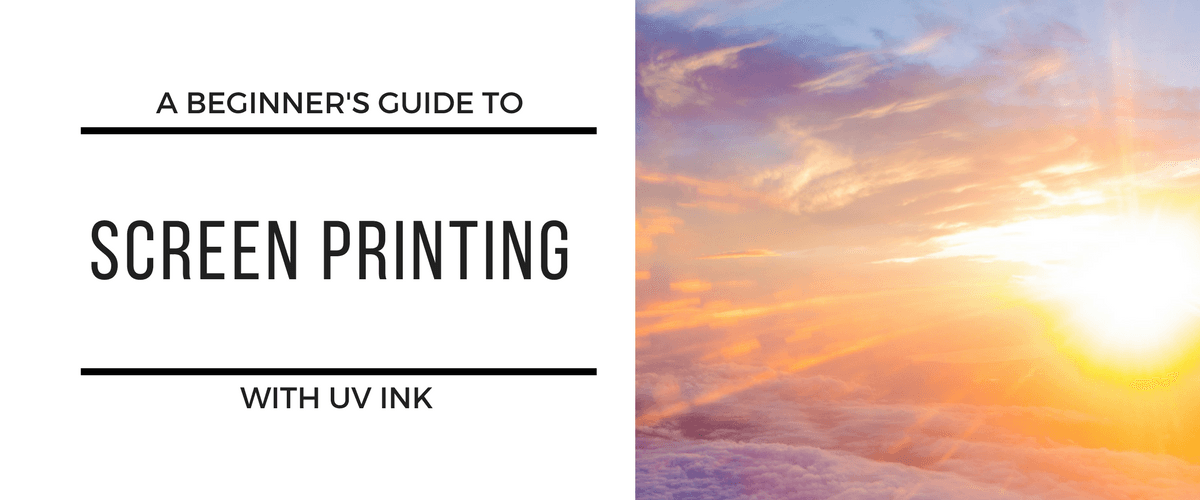

Revolutionizing the screen printing industry through cutting-edge technology and quality service
Anatol Equipment Manufacturing Co.
1429 S Shields Dr
Waukegan, IL 60085


Revolutionizing the screen printing industry through cutting-edge technology and quality service
Anatol Equipment Manufacturing Co.
1429 S Shields Dr
Waukegan, IL 60085

For those printers who are looking to branch out to different substrates to complement their lineup of garment prints, or those just researching a screen printing startup, it’s worth taking the time to learn about UV inks and how they can be used to augment an existing printing operation.
As the name implies, UV inks cure under UV light. The inks themselves are composed of solid monomers and oligomers – molecules and molecular complexes that determine the physical properties of the ink – as well as pigments and performance additives. The inks also contain a photoinitiator that, when exposed to UV light, releases free radicals that enable the oligomers and monomers to bond, creating a solid ink image. The ink itself sits on top of the substrate, rather than settling in, making it ideal for printing on smooth surfaces.
Since it was introduced, UV ink has grown to dominate the industrial screen printing market. In fact, in the United States, UV inks make up between 60 to 65 percent of ink sales in the screen printing industry. There are several reasons UV inks have come to dominate the screen printing ink market. Those reasons include:
• Nearly instant curing. UV ink cures almost instantly when exposed to UV light. For screen printers, that means faster production time. On top of that, the curing window for UV inks is more forgiving than solvent-based inks, making it very difficult to over-cure UV inks.
• Faster production times. Because UV inks can be cured almost instantly, it can be faster and easier to produce UV prints, depending on the number of colors you need to print and the curing unit you have available.
• No toxic fumes. Unlike their solvent-based counterparts, UV inks emit no volatile organic compounds during curing, making them a more environmentally-friendly and worker-friendly ink option.
• Clear detailing. UV inks are thin and generally call for printing through a finer screen mesh. The ink allows printers to achieve extremely fine graphic details when screen printing with UV inks.
• Lower ink usage. While UV inks usually cost more to purchase up front, screen printers generally see UV ink supplies go farther because there’s no solvent required. UV inks also don’t dry in the screen like water-based inks, so you’re less likely to waste ink.
• Lower energy usage. With fast curing under UV lights, screen printing shops that print with UV inks often will use less energy than shops using solvent or water-based inks that require large conveyor dryers. The energy required by UV inks likely will continue to decrease as new light technologies, like LED lights, are used to cure UV inks.
UV inks are used to print on smooth surfaces. UV inks are commonly used in screen printing for decals, nameplates, signage, CDs, metal decoration, container decoration and automotive artwork, as well as for industrial applications. UV inks often contain additives to tailor the ink to the proper screen printing application. Specialty UV inks, such as glitter inks, also are available. There are even UV inks that create prints that attract magnets, making them ideal for display signage that needs to be changed out frequently.
For garment screen printers who are looking to branch out to new markets or offer a larger lineup of products to their current market, UV inks offer an array of product possibilities that isn’t possible, or that is more difficult and more expensive, with the typical solvent-based inks. For screen printers just starting their business, opening a UV-ink-based shop provides plenty of market opportunity on its own. It’s important to note that the equipment for UV screen printing is different than the equipment used in solvent- or water-based screen printing, so it does require an additional capital investment to branch out into screen printing with UV inks.
Looking for some more information about specialty screen printing inks? Check out these blogs:
High Performance Screen Printing: Taking Advantage of Silicone Ink
How to Get Started with Specialty Inks
A Guide to Common Water-Based and Plastisol Screen Printing Ink Additives
Your message was successfully sent!